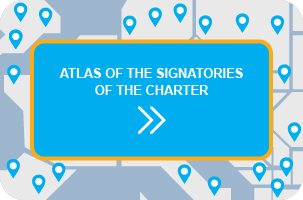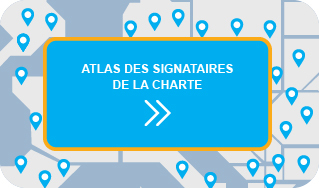European Charter for Equality – What we have achieved in 10 years
Today CEMR celebrates the ten-year anniversary of the European Charter for Equality of Women and Men in Local Life. 2016 represents a key moment for the Charter and its 1,533 signatory towns, cities, and regions; it is a time for reflection and a time for renewed action.
According to the Mayor of Galdakao (Basque Country, Spain) and CEMR’s Spokesperson for Gender Equality, Ibon Uribe: “Unfortunately people, even politicians, think that in our European societies the same opportunities are granted for both women and men, but the truth is they aren’t.”
With respect to the importance of the Charter, Mr. Uribe says: “It takes some time to see how deep inequalities are rooted, and the Charter, that targets politicians at local and regional level, helps in understanding this complex phenomena, giving guidance to implement policies focused on bringing equality between women and men to our towns and regions.“
Since its debut on 12 May 2006 in Innsbruck, Austria, the Charter has been translated into 28 languages. Towns and regions who wish to take meaningful action to create a more gender-equal society can find a wealth of resources on the Observatory website to get inspiration, advice and information. These resources support not only those who wish to sign the Charter, but also those who must now carry out the practical work of drafting an Equality Action Plan to address the root causes and effects of gender inequalities in their territory.
What we have achieved?
Since the launch of the Charter, hundreds of projects in several areas – health, mobility, climate, employment, and local infrastructures – have been developed by European towns, regions and associations of local government to achieve more equal and inclusive societies. Two outstanding examples of Charter initiatives are:
- Women in local politics: the Association of Basque Municipalities (EUDEL) in Spain has created a school that offers coaching, workshops, trainings and seminars for elected women to acquire knowledge and to empower them in their political career. It also provides practical tools for implementation of policies favouring gender equality at local level.
- Gender mainstreaming approach: the municipality of Västerås (Sweden) has adopted a mainstreaming approach to local urban planning that takes into account the different habits, preferences and needs of women and men. Following this strategy, the municipality consults women and men when developing urban planning projects: roads, car parks, sport areas or green spaces. This information can help municipalities to identify and evaluate possible discrimination in the treatment of the public interest.
What’s next?
Despite all these achievements, the statistics prove that gender equality is still far from being achieved. To date, 33% of women in the European Union have experienced physical and/or sexual violence since the age of 15; they earn 16,5% less than men for the same work. This is why CEMR will continue extending the reach of the Charter and reinforcing the cooperation between signatories. Therefore, the continued support of the European institutions is needed to continue to sustain the transformative work of the Charter.
In addition, in 2018, CEMR will organise a European conference on equality and diversity that will bring together local politicians to discuss further actions to tackle inequalities in their territories, including gender-based discrimination.















